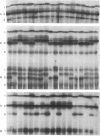Abstract
The banding patterns of certain anodal peroxidase variants of red-fruited tomato species are governed by alleles at four loci—two alleles per locus. Alleles at three loci code for modified enzyme migration patterns and are codominant in heterozygotes; those at the fourth locus code for presence or absence of a band. No evidence of linkage was detected in preliminary tests between four of the six possible combinations of loci. All variant alleles—i.e., those not represented in the standard genotype of Lycopersicon esculentum—exist in the wild L. pimpinellifolium from coastal Peru; all but Prx-3n are also known in L. esculentum from the sympatric region but are rare or absent elsewhere. Between the distributions of alleles of Prx-1 and those of Ge, the gamete-eliminator locus, a significant association exists, which probably does not owe to genetic linkage. The tendency of alleles of Prx loci, as well as those of cm, Ge, h, and Od, to be shared between wild and cultivated taxa in the sympatric region but seldom elsewhere, in addition to published correlated evidence, suggests that the wild alleles tend to substitute in cultivated forms as a result of introgression. In respect to the number of common alleles, cultivated tomatoes more closely resemble the wild L. esculentum var. cerasiforme than L. pimpinellifolium.
Keywords: allozymic polymorphism, electrophoresis, Lycopersicon, phylogeny
Full text
PDF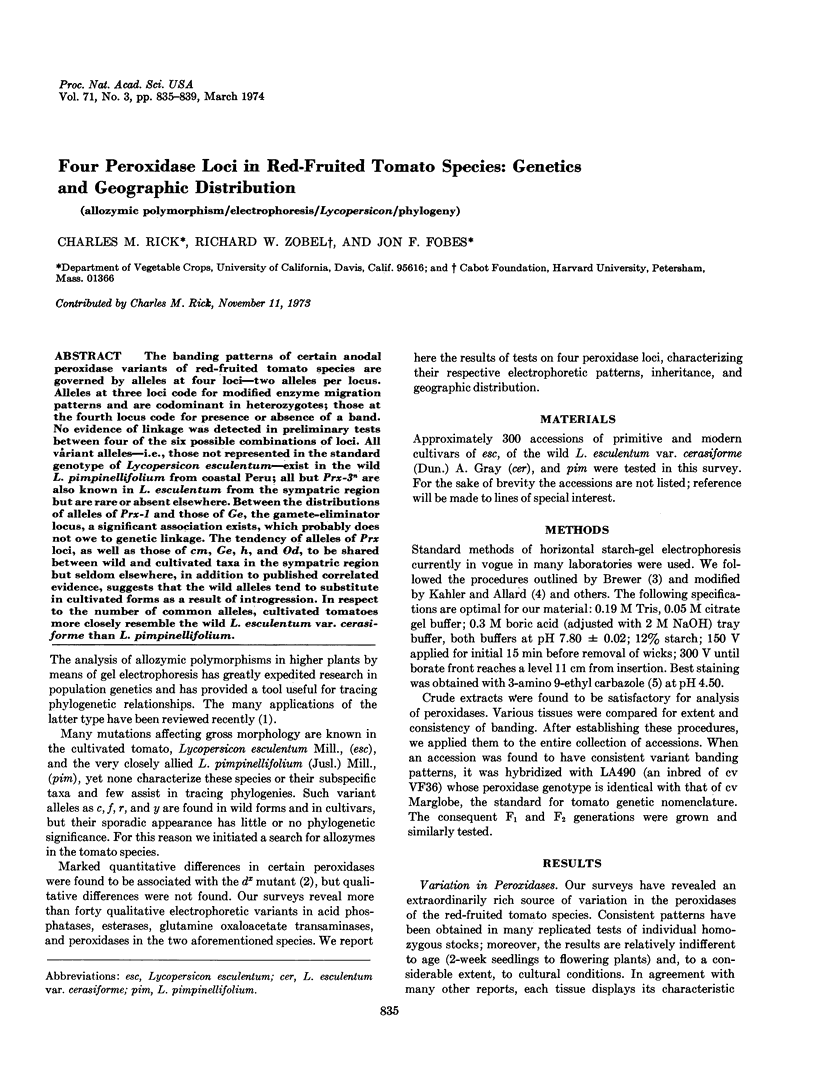
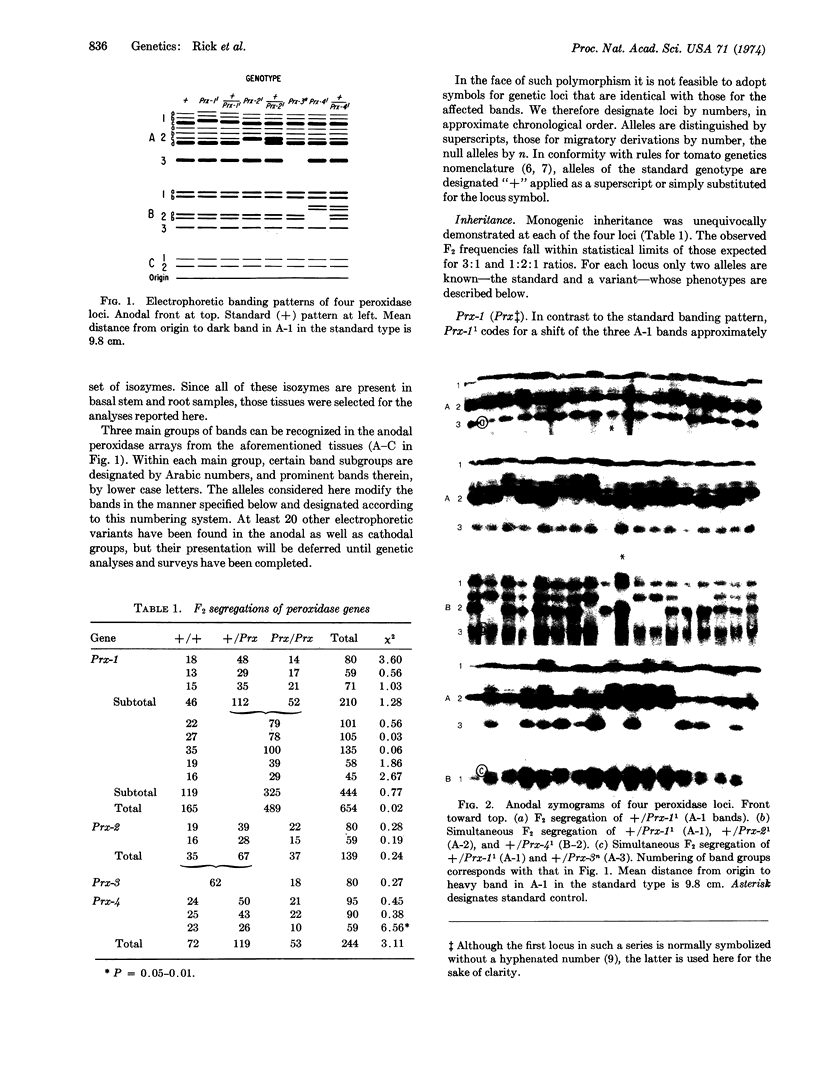
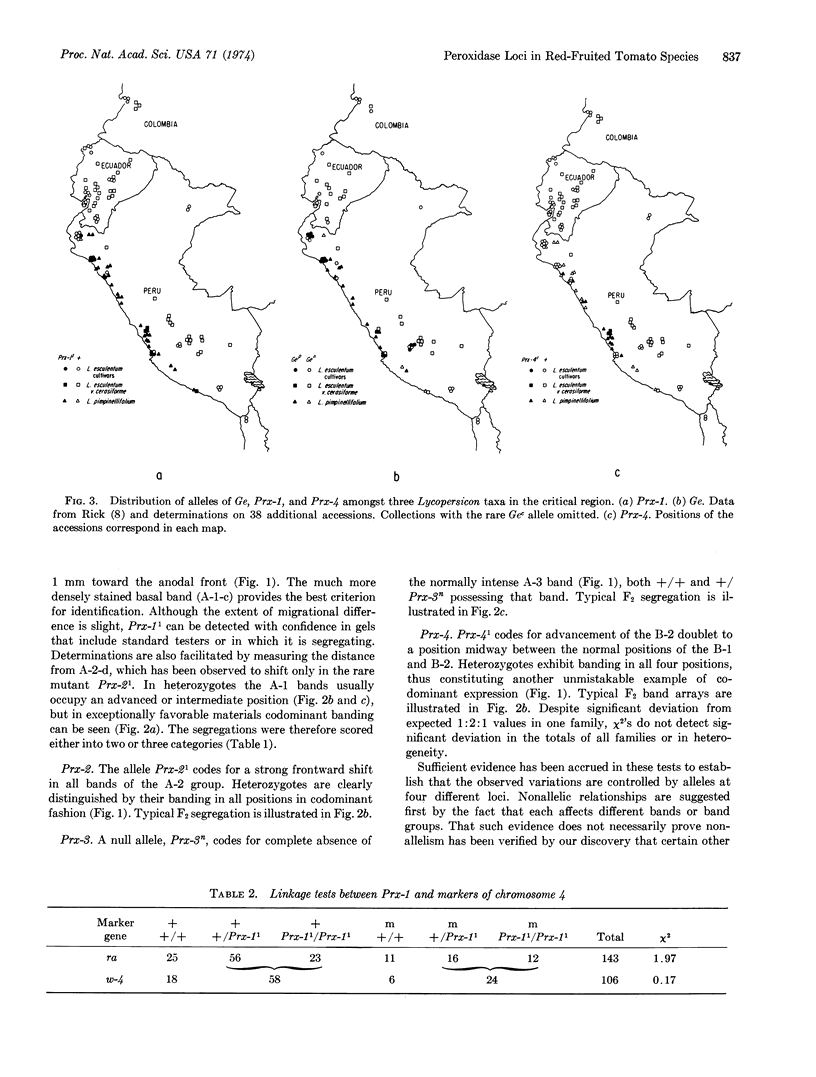
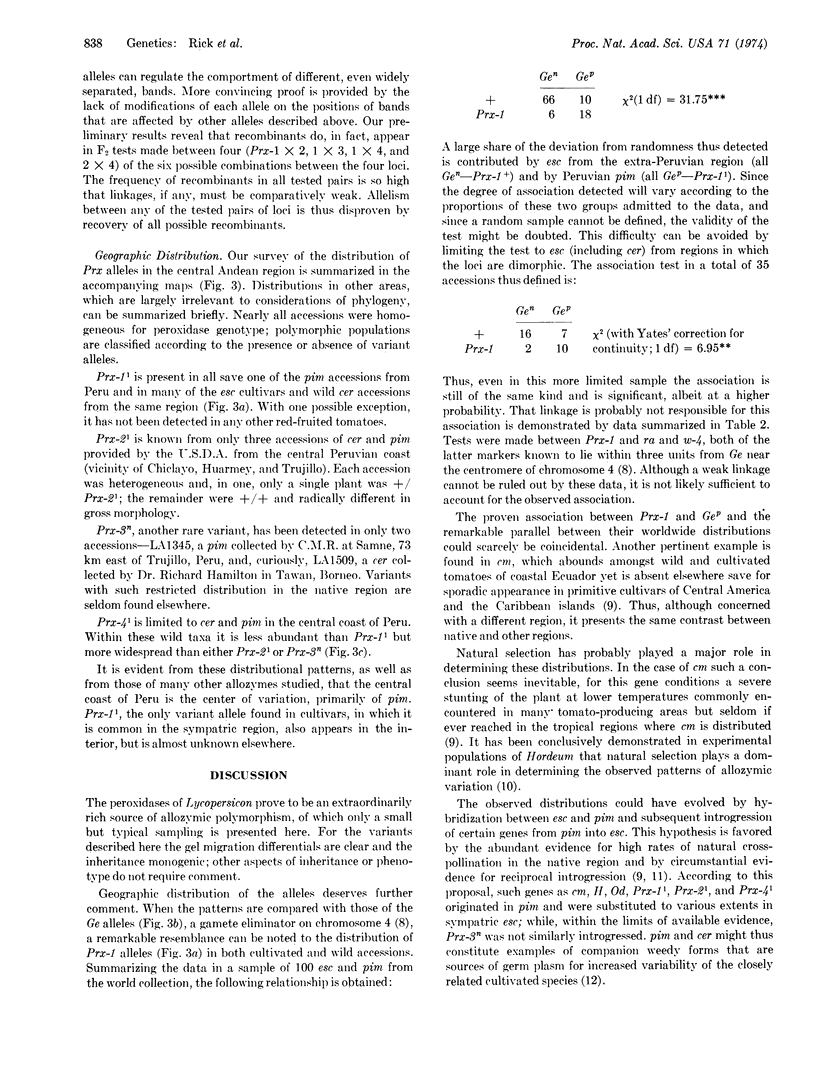
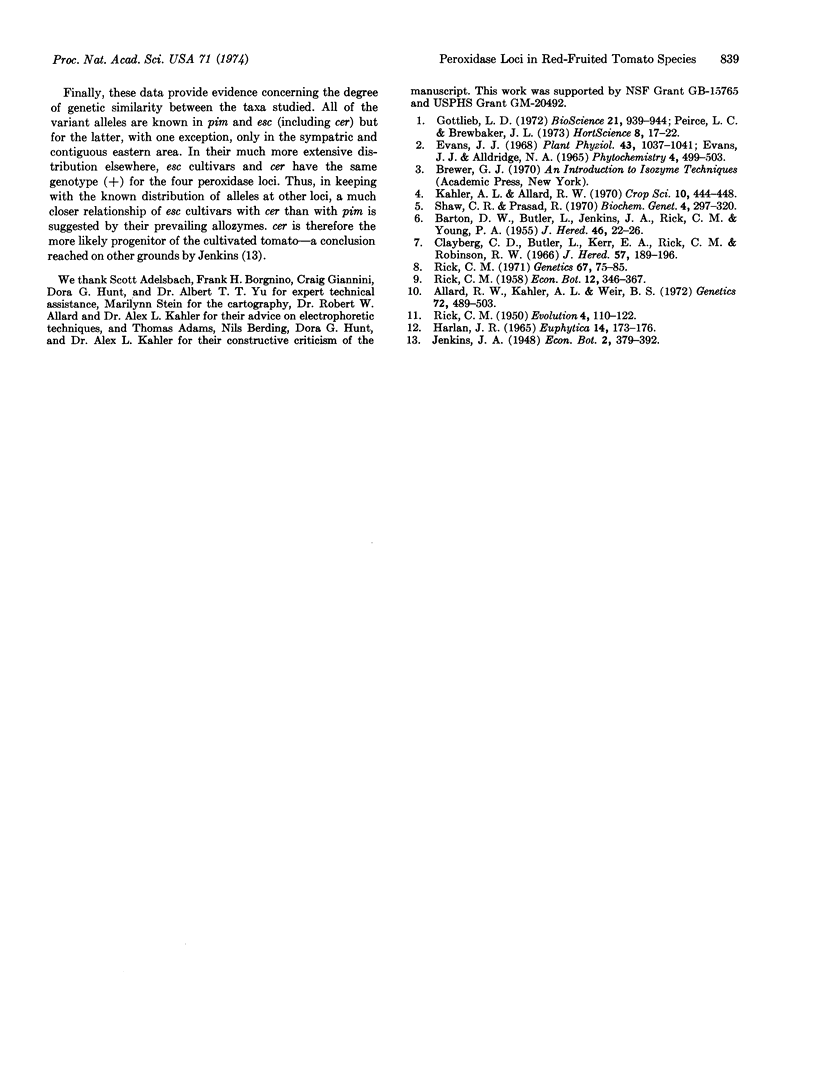
Images in this article
Selected References
These references are in PubMed. This may not be the complete list of references from this article.
- Allard R. W., Kahler A. L., Weir B. S. The effect of selection on esterase allozymes in a barley population. Genetics. 1972 Nov;72(3):489–503. doi: 10.1093/genetics/72.3.489. [DOI] [PMC free article] [PubMed] [Google Scholar]
- Evans J. J. Peroxidases from the extreme dwarf tomato plant. Identification, isolation, and partial purification. Plant Physiol. 1968 Jul;43(7):1037–1041. doi: 10.1104/pp.43.7.1037. [DOI] [PMC free article] [PubMed] [Google Scholar]
- Rick C. M. The tomato ge locus: linkage relations and geographic distribution of alleles. Genetics. 1971 Jan;67(1):75–85. doi: 10.1093/genetics/67.1.75. [DOI] [PMC free article] [PubMed] [Google Scholar]
- Shaw C. R., Prasad R. Starch gel electrophoresis of enzymes--a compilation of recipes. Biochem Genet. 1970 Apr;4(2):297–320. doi: 10.1007/BF00485780. [DOI] [PubMed] [Google Scholar]



